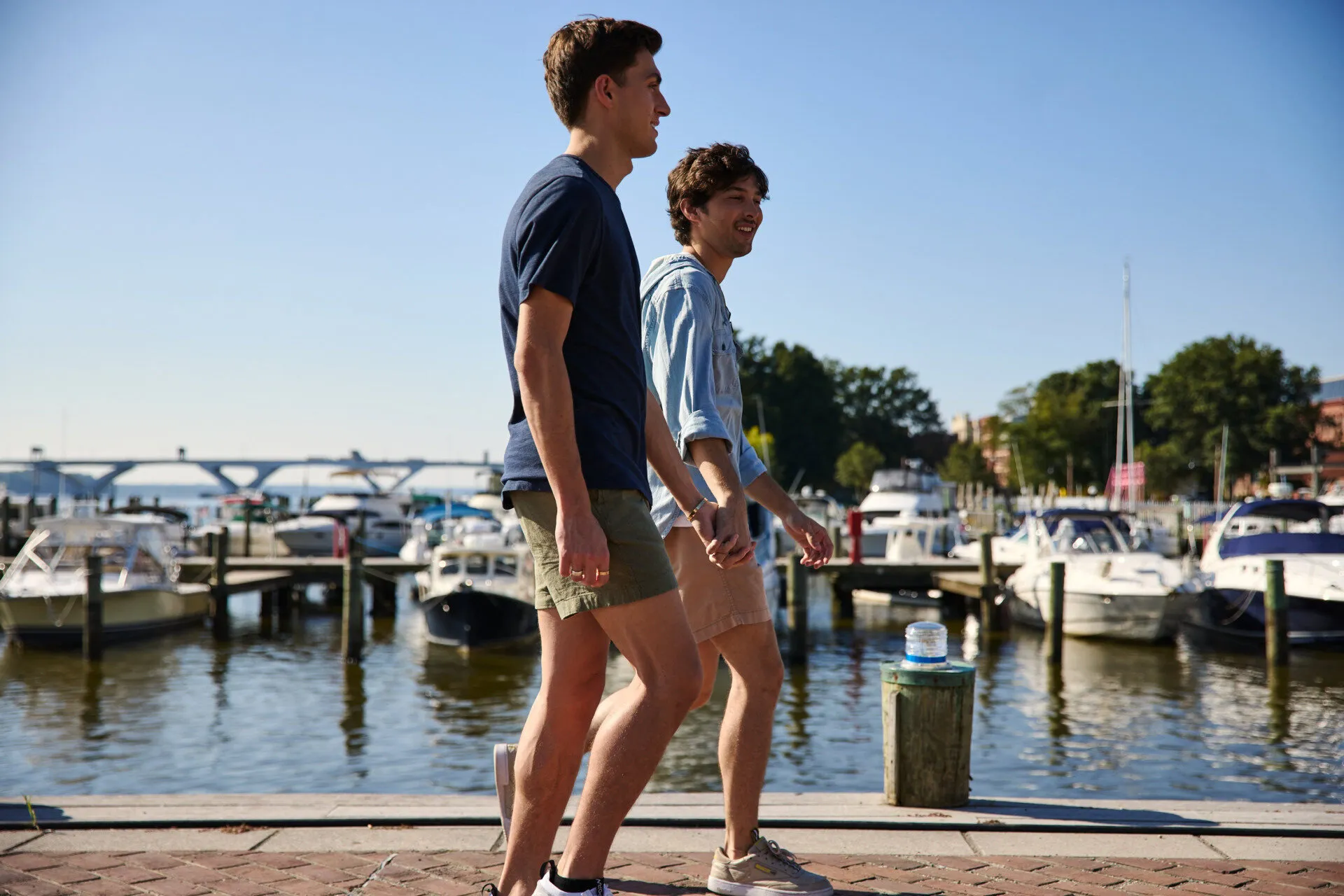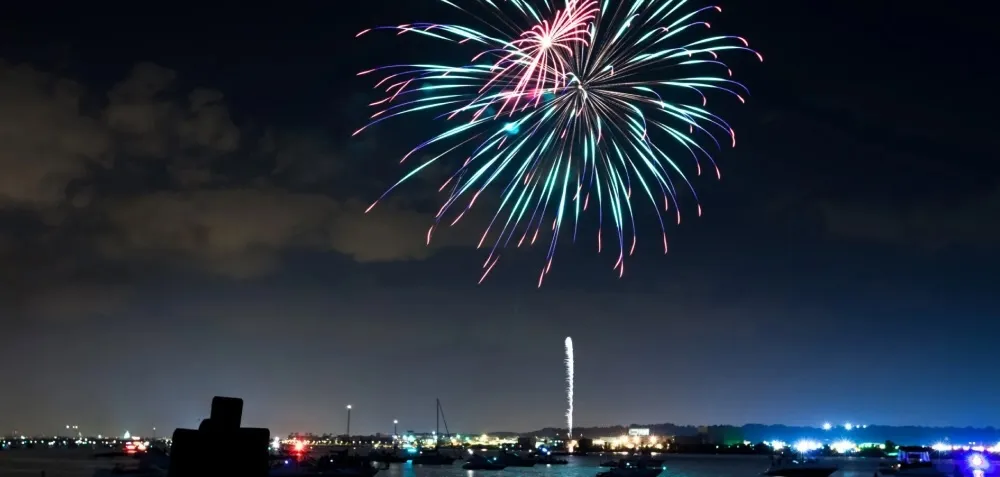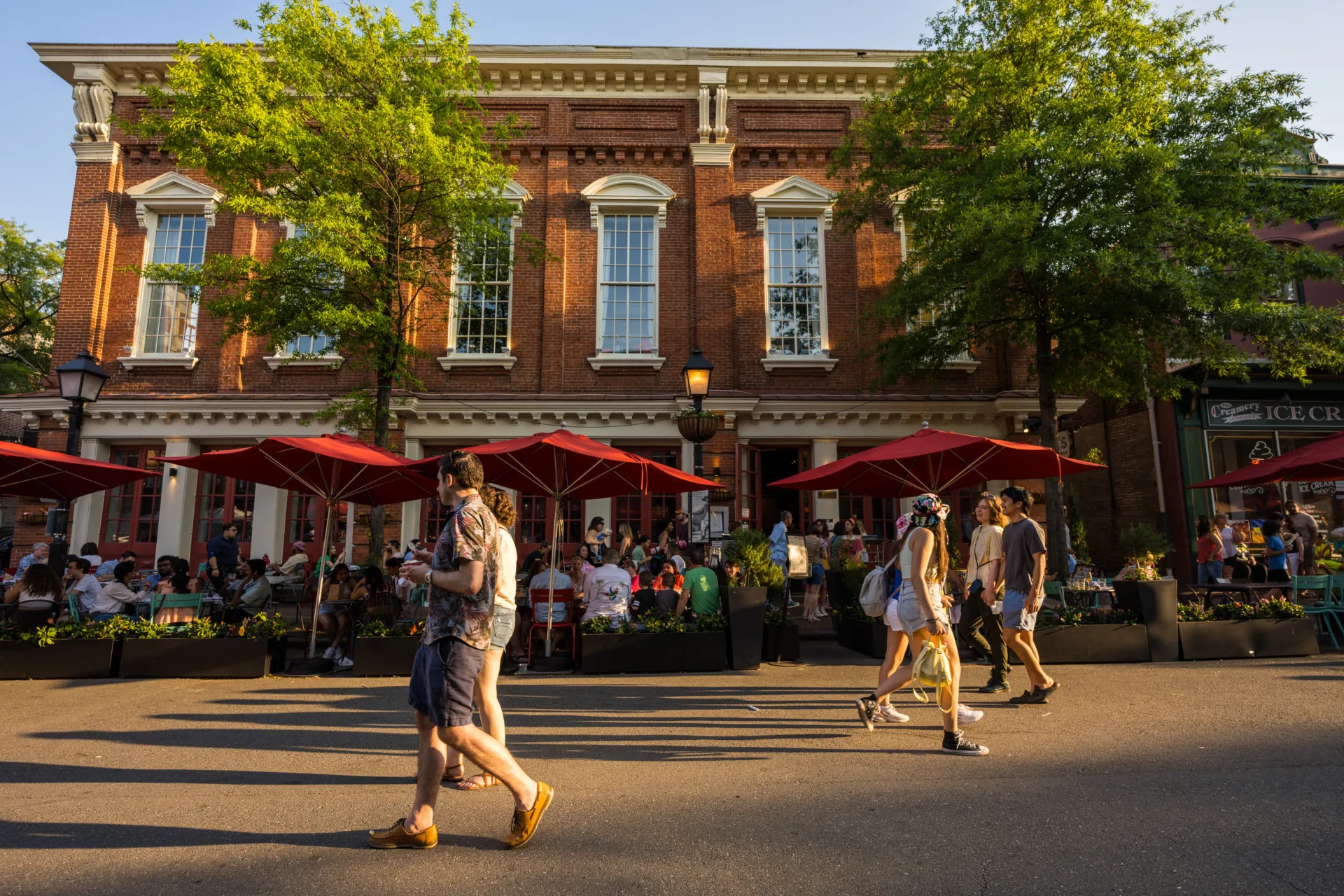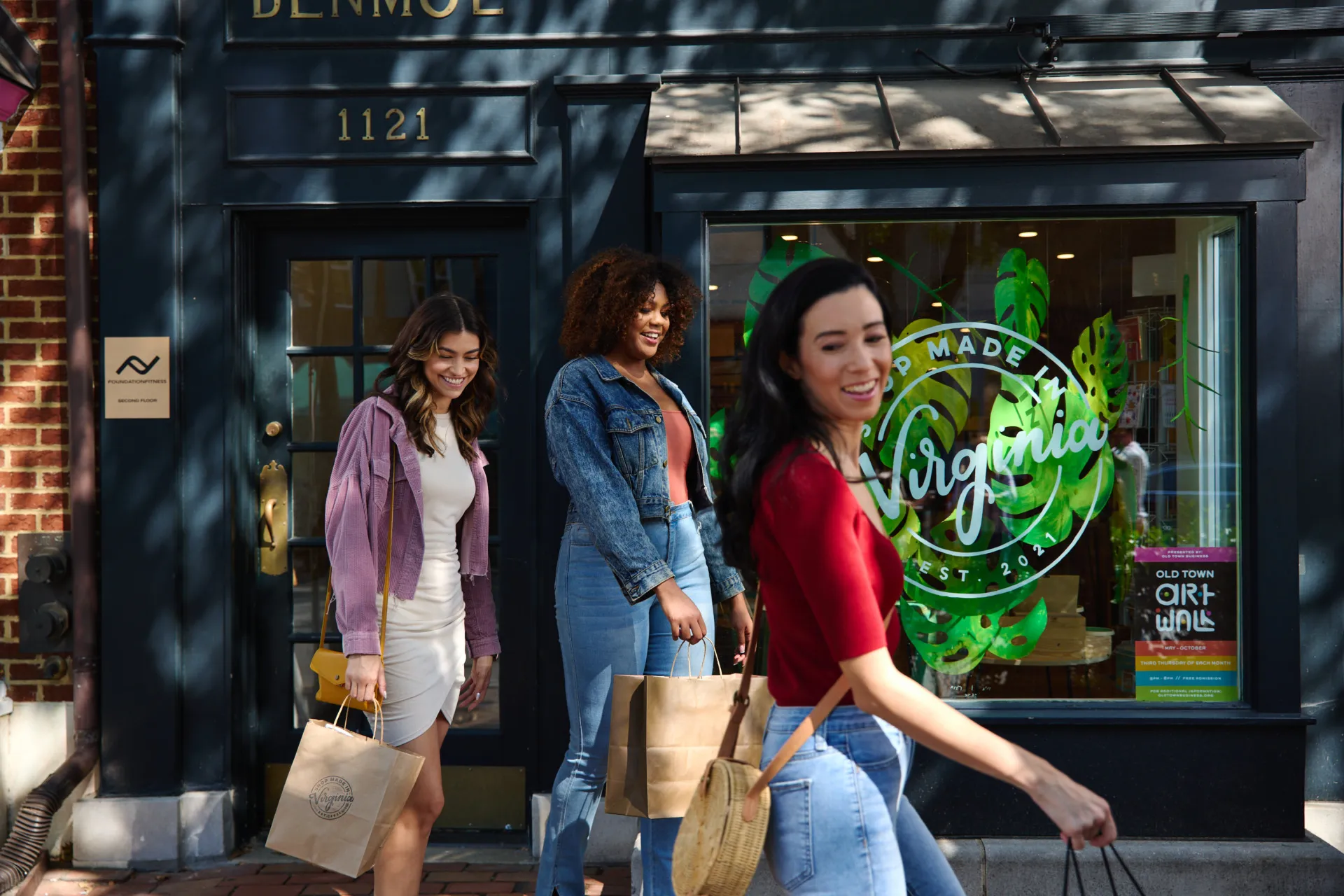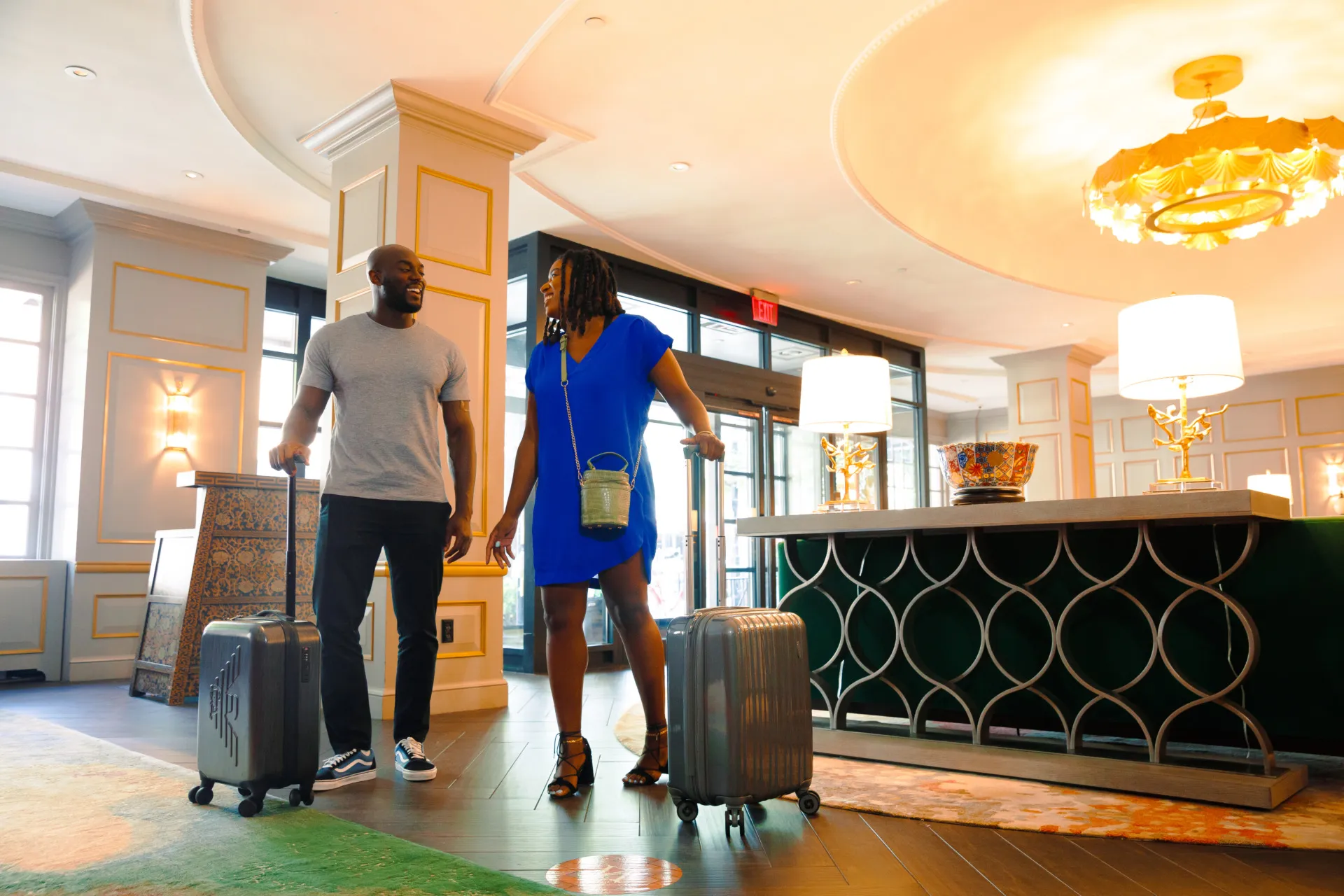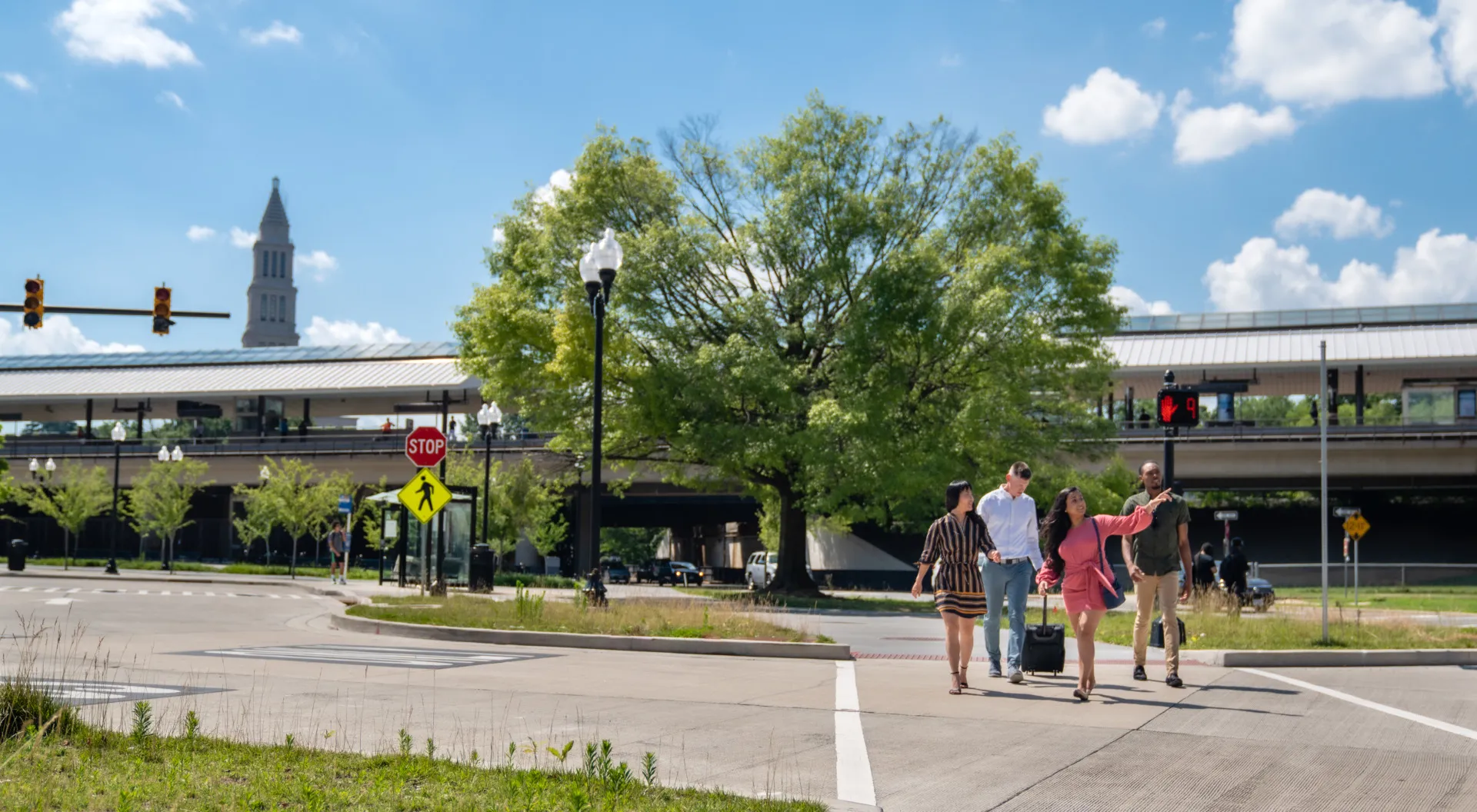Woodlawn & Pope-Leighey House
Visit two iconic homes on one site, both designed by preeminent architects of their respective ages. One used his architecture to help establish the newly founded United States as the modern successor to ancient Greece and Rome. The other developed an organic 20th century American architecture with expressions of unity, integration, and beauty. But it is not just a country’s architecture that defines its essence, its also defined by the stories of its people.
Overlooking the Potomac, Woodlawn plantation was carved from George Washington’s Mount Vernon, itself a plantation established on the tribal lands of the Algonkian speaking Doeg people. The Federal-style mansion built for Eleanor and Lawrence Lewis by architect William Thornton displays the power and prosperity of America’s first ruling class, a group whose wealth was largely acquired by enslaving African people. Anti-slavery Quakers purchased and transformed Woodlawn in the 1840s. The Quakers and local free Black people demonstrated that with agricultural reforms and Black landownership the south could be successfully cultivated on middle-class farms without slavery.
Frank Lloyd Wright’s Pope-Leighey House, a Usonian home, built for the Pope family in 1940, artfully blends into the landscape. Displaying innovative design concepts and using natural materials that create a sense of space and grace, the home is an expression of Wright’s vision for affordable and more inclusive middle-class housing. The home was moved to Woodlawn in 1965 by its second owner, recently widowed Marjorie Leighey, to save it from destruction by eminent domain. It’s the only Wright house open to the public in Virginia.
Today we endeavor to understand how these two architectural visions, the history of the land, and the experiences of all the people who occupied these spaces help define us.
